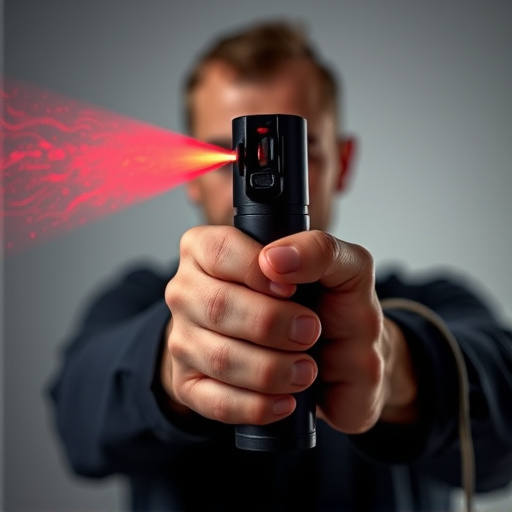Understanding pepper spray labeling is crucial for personal security. The manufacture date determines a 2-5 year shelf life post-opening, influenced by storage conditions and usage frequency. Optimal storage (cool, dry, away from sunlight) extends potency, with a 'use by' date to avoid decreased effectiveness. Storing in a secure cabinet, inspecting regularly, and replacing within 18 months ensures optimal performance of pepper spray after opening.
Personal security is a growing concern, making pepper spray canisters essential tools. Understanding their labeling and expiry dates is crucial. Once opened, the pepper spray’s shelf life significantly changes. Various factors—temperature, humidity, and storage conditions—impact its effectiveness. This article guides you through everything from deciphering canister labels to best practices for storing and maintaining your pepper spray to ensure optimal performance when it matters most.
- Understanding Pepper Spray Canister Labeling and Expiry Dates
- Factors Affecting Pepper Spray Shelf Life After Opening
- Best Practices for Storing and Maintaining Your Pepper Spray
Understanding Pepper Spray Canister Labeling and Expiry Dates
When it comes to personal security, understanding the labeling and expiry dates of your pepper spray canister is crucial. Each canister features specific information that provides insights into its effectiveness and longevity. Pay close attention to the manufacture date, which offers a starting point for gauging the pepper spray’s shelf life after opening. Pepper spray has a limited lifespan, typically ranging from 2 to 5 years, depending on storage conditions.
The label will also indicate an expiry or ‘use by’ date. After this date, the spray’s potency may diminish, and its effectiveness could be compromised. Proper storage is key in maintaining the integrity of your pepper spray. Keep it in a cool, dry place away from direct sunlight to ensure optimal performance when you need it most.
Factors Affecting Pepper Spray Shelf Life After Opening
After opening a pepper spray canister, several factors significantly influence its remaining shelf life. One key factor is storage conditions—pepper spray should be kept in a cool, dry place away from direct sunlight or extreme temperatures to maintain its effectiveness. Heat and moisture can degrade the active ingredients, reducing the spray’s potency over time.
Another critical aspect is how often the canister is used or tested. Each activation reduces the remaining contents. Regular testing or frequent use will expedite the degradation process. Additionally, environmental factors like humidity levels in the storage area can impact the spray’s longevity. Maintaining optimal storage conditions and minimizing usage can help extend the pepper spray’s shelf life after opening, ensuring its continued reliability when needed most.
Best Practices for Storing and Maintaining Your Pepper Spray
When storing your pepper spray, it’s crucial to keep it in a cool, dry place away from direct sunlight. Temperatures above 30°C can degrade the effectiveness of the spray. Ideal storage conditions mimic those found in a non-humidifier, air-conditioned room. Keep it out of reach of children and pets, secured in a lockable cabinet if possible.
After opening, pepper spray has a shelf life of approximately 2 years. However, best practices recommend replacing it after 18 months for optimal performance. Regularly inspect your canister for any signs of damage or leakage. Ensure the nozzle is always covered by the protective cap to prevent accidental discharge. Store spare canisters nearby for convenience and peace of mind.
Knowing the pepper spray shelf life after opening is essential for maintaining your personal security. By understanding labeling, expiry dates, and best practices for storage and maintenance, you can ensure your pepper spray remains effective when you need it most. Remember to regularly check and update your supply, as proper care will maximize its usability and keep you safe.
